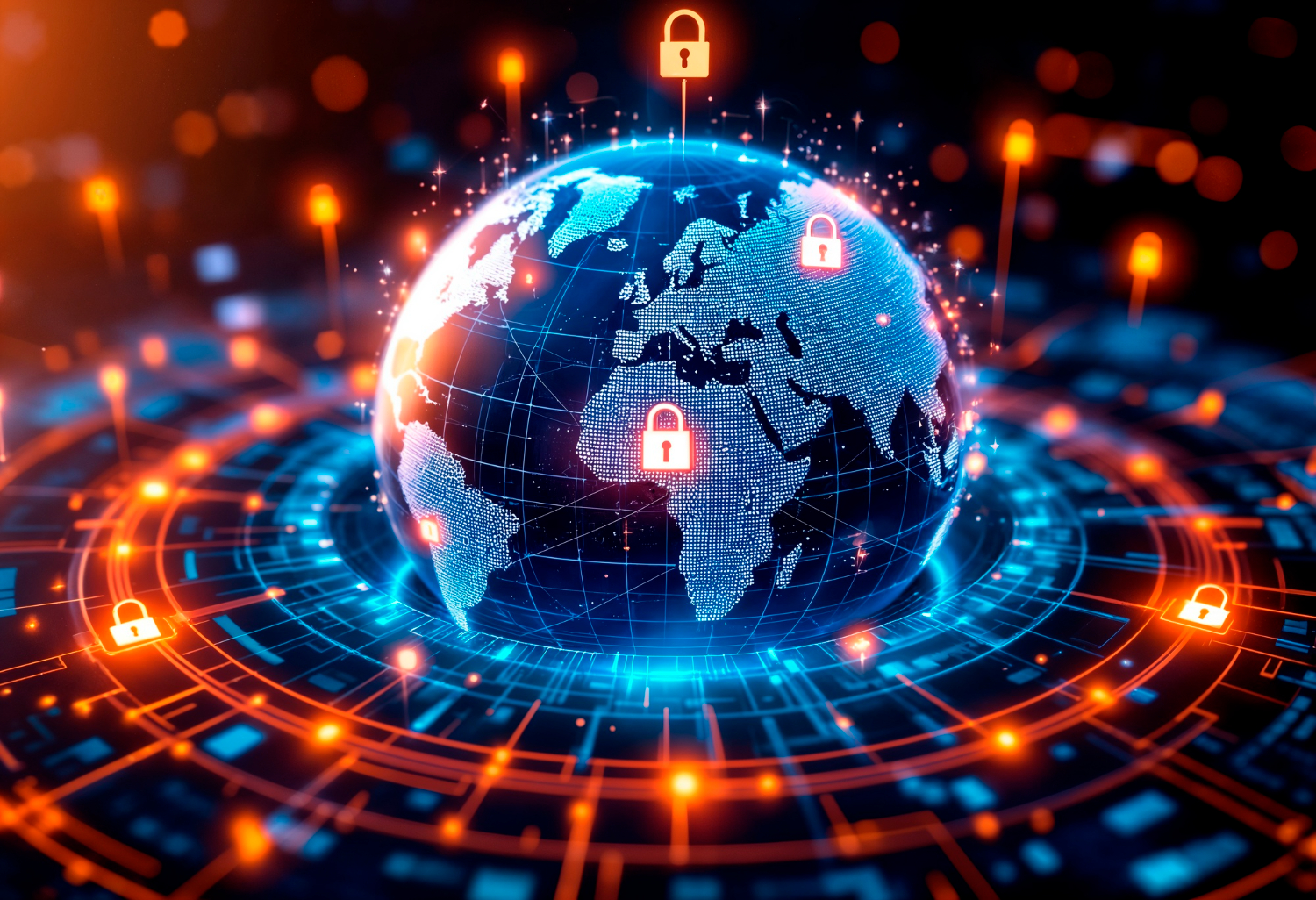The year 2025 has witnessed a significant surge in cyberattacks, impacting critical sectors and economies worldwide. Notably, incidents such as the cyberattack on Jaguar Land Rover (JLR) and the disruption of Collins Aerospace’s systems have underscored the vulnerabilities in global supply chains and the interconnectedness of modern industries. This article delves into the short-term and long-term repercussions of these cyberattacks, examines the efforts of agencies combating cybercrime, and highlights India’s strategic initiatives to bolster its cybersecurity posture.
The Surge in Cyberattacks: A Global Perspective
Short-Term Repercussions
- Operational Disruptions: Cyberattacks have led to immediate operational halts across various industries. For instance, the JLR cyberattack forced the company to shut down manufacturing at key sites, including Wolverhampton and Halewood, resulting in significant production delays. Similarly, the Collins Aerospace ransomware attack disrupted check-in systems at major European airports, leading to widespread flight delays and cancellations.
- Financial Losses: The financial impact of cyberattacks is profound. JLR estimated a loss of £120 million due to the cyberattack, while the global cost of cybercrime is projected to reach $10.5 trillion annually by 2025, reflecting a 15% year-over-year increase. These financial strains have led to liquidity stress and necessitated emergency vendor swaps.
- Supply Chain Vulnerabilities: The interconnectedness of global supply chains has magnified the impact of cyberattacks. Nearly 30% of business leaders reported an increase in cyberattacks on their supply chains over the past six months, highlighting the systemic risks posed by third-party vendors and service providers.
Long-Term Implications
- Economic Impact: Prolonged cyberattacks can lead to sustained financial instability, affecting stock prices and investor confidence. The JLR incident, for example, contributed to a five-month low in UK factory output, reflecting the broader economic repercussions of cyber disruptions.
- Reputation Damage: Companies suffer long-term reputational harm following cyberattacks, leading to a loss of customer trust and market share. The JLR attack, occurring during a key sales milestone, turned IT disruption into a revenue choke event, amplifying the reputational damage.
- National Security Threats: Critical infrastructure, including energy grids and defense systems, remains vulnerable to sophisticated cyber threats. The Collins Aerospace incident highlighted how vendor software and connectivity backbones can become systemic choke points, far beyond a single enterprise perimeter, posing national security risks.
Case Studies of High-Profile Cyberattacks
Jaguar Land Rover Cyberattack
In August 2025, JLR experienced a cyberattack attributed to the “Scattered Spider” hacking group. The attack disrupted major systems, including design, manufacturing, and sales, leading to a significant financial loss and operational downtime. The timing of the attack coincided with a key UK sales milestone, turning IT disruption into a revenue choke event. The combination of stolen Jira credentials, PowerShell-based persistence, and Sliver C2 highlighted how identity and project tooling can become privileged conduits into core development and production systems if not properly secured and monitored.
Collins Aerospace Ransomware Attack
In September 2025, Collins Aerospace’s MUSE platform, responsible for airline check-in and boarding systems, was compromised by ransomware. This led to widespread flight delays and cancellations across European airports, including London Heathrow, Brussels, and Berlin. The incident revealed how airport ground operations depend on shared vendor platforms and dedicated VPNs, emphasizing the need for vendor environment segmentation and operational fallbacks to ensure cyber continuity.
Global Efforts to Combat Cybercrime
INTERPOL’s Global Cybercrime Strategy (2022–2025)
INTERPOL’s strategy focuses on enabling a proactive and agile posture in the prevention and disruption of cybercrime. This includes developing an in-depth understanding of the cybercrime threat landscape through information sharing and intelligence analysis. The agency’s efforts are exemplified by Operation HAECHI VI, which resulted in the recovery of USD 439 million across fiat and virtual assets, demonstrating the effectiveness of coordinated, intelligence-led disruption at money flow choke points.
Operation Serengeti 2025
Operation Serengeti 2025, coordinated by INTERPOL, exemplifies international collaboration in combating cybercrime. The operation involved cross-border law enforcement networks to disrupt cybercriminal activities, serving as a model for future global cybersecurity initiatives. Such operations highlight the importance of centralized reporting, rapid bank cooperation, and crypto wallet freezing capacity in combating cyber-enabled financial crimes.
India’s Cybersecurity Landscape
CERT-In’s Initiatives
The Indian Computer Emergency Response Team (CERT-In) has been instrumental in enhancing the nation’s cybersecurity posture. In March 2025, CERT-In facilitated 109 cybersecurity mock drills, engaging 1,438 organizations across various sectors to bolster preparedness against cyber threats. The agency’s efforts are further supported by the 2025 updates to its guidelines, which now apply to every business operating in India’s digital ecosystem, mandating audits and breach disclosures within hours.
DSCI’s Role
The Data Security Council of India (DSCI) has been pivotal in promoting cybersecurity awareness and best practices. In 2025, DSCI reported a significant increase in malware detections, with 369.01 million incidents across 8.44 million endpoints, underscoring the growing cyber threat landscape. The council’s efforts include providing localized risk insights through state-level heat maps and sectoral targeting, aiding organizations in prioritizing their cybersecurity budgets and controls.
National Cyber Crime Reporting Portal (NCRP)
The NCRP serves as a centralized platform for reporting cybercrimes. However, experts have noted that only 2% of the nearly 21 lakh cyber complaints received nationally resulted in First Information Reports (FIRs), indicating challenges in translating complaints into actionable law enforcement responses. This highlights the need for enhanced coordination between reporting platforms and law enforcement agencies to improve the efficacy of cybercrime investigations.
State Cyber Crime Cells and Cyber Task Forces
State-level Cyber Crime Cells and Cyber Task Forces play a crucial role in addressing regional cyber threats. These units collaborate with national agencies to investigate and mitigate cybercrimes, though challenges such as resource constraints and jurisdictional issues persist. Initiatives like the “Cyber Warriors” program, which trained over 500 youths from 22 Indian states as cybercrime prevention ambassadors, exemplify efforts to strengthen national awareness and readiness against cyber threats.
Challenges in Combating Cybercrime
Underreporting and Data Gaps
A significant challenge in combating cybercrime is underreporting. Many incidents go unreported due to lack of awareness, fear of reputational damage, or inadequate reporting mechanisms, leading to data gaps that hinder effective response strategies. Addressing these issues requires public awareness campaigns and the establishment of user-friendly reporting platforms.
Resource Constraints
Agencies tasked with combating cybercrime often face resource constraints, including limited funding, outdated technology, and insufficient skilled personnel, impacting their ability to effectively address the growing cyber threat landscape. Investing in capacity building and technological upgrades is essential to enhance the capabilities of these agencies.
Legal and Jurisdictional Issues
Cybercrimes often transcend national borders, complicating legal proceedings and enforcement actions. Differences in cyber laws, lack of international treaties and jurisdictional challenges impede the prosecution of cybercriminals operating across multiple countries. International cooperation and harmonization of cyber laws are crucial to overcoming these challenges.
Future Outlook
Strengthening International Collaboration
Enhanced international collaboration is essential to combat cybercrime effectively. Countries should engage in bilateral and multilateral agreements to facilitate information sharing, joint operations, and mutual legal assistance in cybercrime investigations. Such collaborations can lead to more coordinated and effective responses to cyber threats.
Investment in Cybersecurity Infrastructure
Governments and organizations must invest in robust cybersecurity infrastructure, including advanced threat detection systems, secure communication channels, and resilient networks, to safeguard against evolving cyber threats. Proactive investments can mitigate the impact of potential cyberattacks and enhance overall cybersecurity posture.
Public Awareness and Education
Raising public awareness about cybersecurity risks and promoting digital literacy can empower individuals and organizations to adopt secure online practices, reducing the overall vulnerability to cyberattacks. Educational initiatives should be integrated into school curricula and professional training programs.
Policy and Legal Reforms
Updating and harmonizing cyber laws to address emerging threats, establishing clear protocols for cross-border cybercrime investigations, and enhancing the capacity of law enforcement agencies are crucial steps in strengthening the legal framework against cybercrime. Regular reviews and updates of policies can ensure their relevance in the face of evolving cyber threats.
In 2025, cyberattacks have become a strategic business risk, capable of disrupting global operations, supply chains and financial stability. Organizations must move beyond perimeter defences, adopting identity-centric architectures, AI-driven monitoring and robust third-party risk frameworks to maintain operational continuity. India’s coordinated ecosystem, led by I4C, CERT-In, DSCI and state cyber cells, demonstrates how intelligence-driven, rapid-response mechanisms can mitigate threats, while global collaborations like INTERPOL’s HAECHI VI show the impact of cross-border asset recovery and law enforcement synergy.











